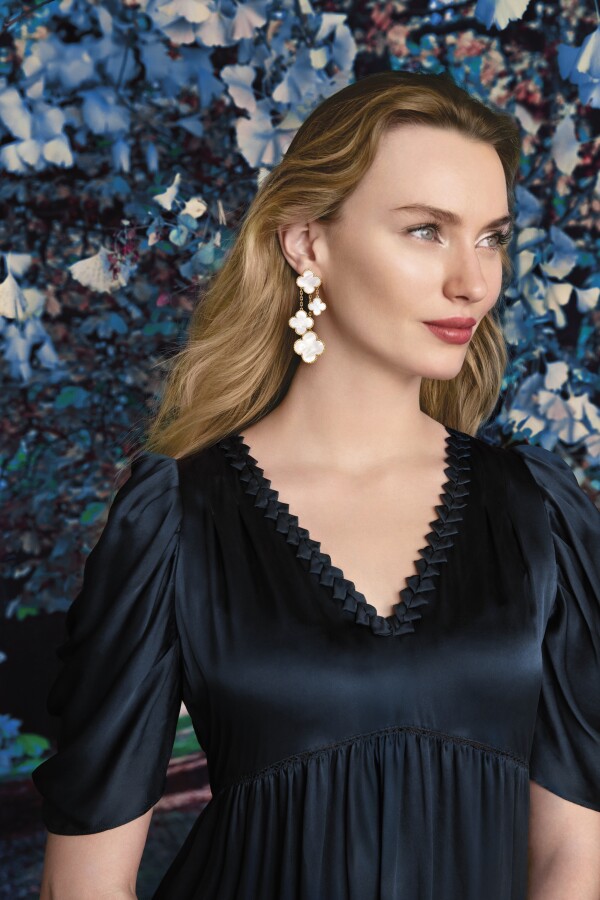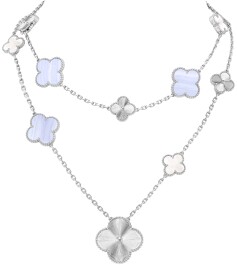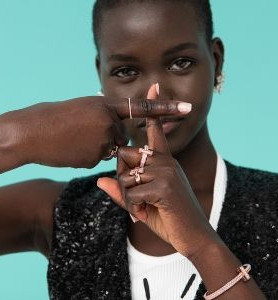How Van Cleef & Arpels has become a master of changing fortunes with one iconic motif
If fashion has always been about signs—of belonging, of aspiration, of who we are trying to become—jewellery has long been its most enduring language. The talisman we touch when no one is looking. The personal archive that doesn’t demand explanation. And for nearly six decades, Van Cleef & Arpels’ Alhambra has been that kind of symbol: a neat quatrefoil standing in for luck, lineage, beauty, and belief.

Introduced in 1968 as a 20-motif long necklace in yellow gold, bordered by tiny beads, it became a global icon with remarkable discretion. The Alhambra wasn’t born from a celebrity moment or designed for the red carpet first—it was built from a simple but persuasive idea: luck should be worn. Jacques Arpels famously gathered four-leaf clovers in his garden and gifted them to colleagues with the poem ‘Don’t Quit’, leaning into hope rather than superstition. From that sentiment came one of jewellery’s most recognisable silhouettes.
Since then, the collection has played with material and meaning across eras—malachite in the 1970s, diamond pavé in the 2000s, chalcedony arriving like a fresh tide—each evolution subtle but never slight. Catherine Renier, President and CEO of Van Cleef & Arpels, notes: ‘The Alhambra collection, created in 1968, continues to demonstrate its capacity for both self-renewal and perpetuity.’


This year, (and aptly with the festive season on the horizon), that renewal becomes physical. The Maison is introducing one of its historic traditions—transformable jewellery—to the Alhambra universe. Versatility is no longer a concession to practicality; it is a marker of luxury itself. The modern wearer expects change, fluidity, options beyond the static form.
Van Cleef & Arpels has engineered this into two new Magic Alhambra long necklaces. Asymmetrical motifs of varying sizes form a choreography of guilloché gold, luminous mother-of-pearl and, on a second version, translucent chalcedony. Hidden inside that charm is mechanical intelligence—a detachable central element, English blade clasps disguised beneath beading, sections that lengthen or loop. Long necklace becomes bracelet becomes short necklace, shifting as easily as the tide or the soft light on a summer morning. As is always with Van Cleef & Arpels’ craftsmanship, everything is considered—the fall of the chain, the balance of the motifs, the precise moment where hardware must disappear. Transformability is only luxury when it stays invisible.

The reversible Vintage Alhambra rings follow the same logic: two faces, one decision. Turn the motif one way and it reveals grey mother-of-pearl, quiet depth and diffused light. Rotate it and a diamond surfaces, framed by guilloché gold. White gold and chalcedony form the second design, offering its own calibrated duality. The mechanism is seamless—a small gesture that changes the story. The Sweet Alhambra watch confirms that time itself belongs to this expanding language of luck. Alternating motifs form a miniature landscape of precious matter, every curve bordered by beaded gold. Diamonds amplify the geometry without drawing attention to themselves.
It could be said then that the persistence of Alhambra isn’t just about impeccable craftsmanship or heritage, though both are present. The emblem’s endurance speaks to a collective desire for something protective against the skin. An amulet with cultural neutrality—neither religious nor political—that carries optimism without naïveté. Luck is the most democratic of symbols. Belief in it asks nothing but hope. By configuring the pieces to suit mood, place, or instinct, Van Cleef & Arpels acknowledges that a modern talisman must move. Jewellery that adapts becomes jewellery that remains relevant—the ultimate form of longevity.

From the golden beading, a miniature architecture in itself, to stones selected with fastidious attention—chalcedony like sea glass, white mother-of-pearl for steady gleam, grey mother-of-pearl for depth—everything supports this vision. Renier calls the coupling of versatility and enduring elegance a ‘core value’ since the beginning. In a world drawn to extremes, Alhambra’s evolution reminds us that subtlety isn’t static—it can expand and shift.
And so from 1968 to today, the Alhambra motif has quietly mapped the shape of what we carry with us: talismans of hope, pieces that respond to our movements, moods, and moments. These new transformable creations extend that logic, offering adaptability without losing the collection’s signature elegance. Worn long or short, as bracelet or ring, on ocean-side mornings and twilit evenings, the Alhambra continues to balance tradition and reinvention—a reminder that luck, like style, is something we shape for ourselves.





